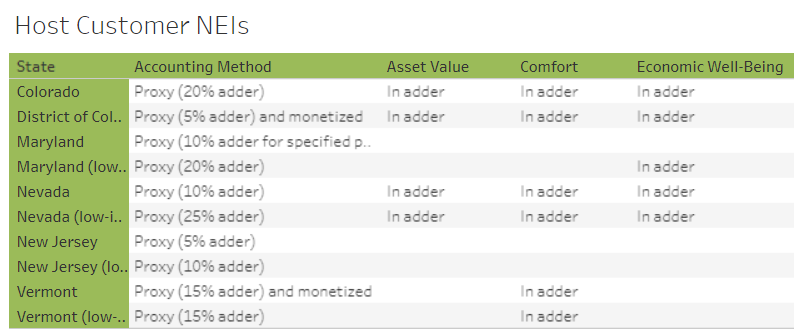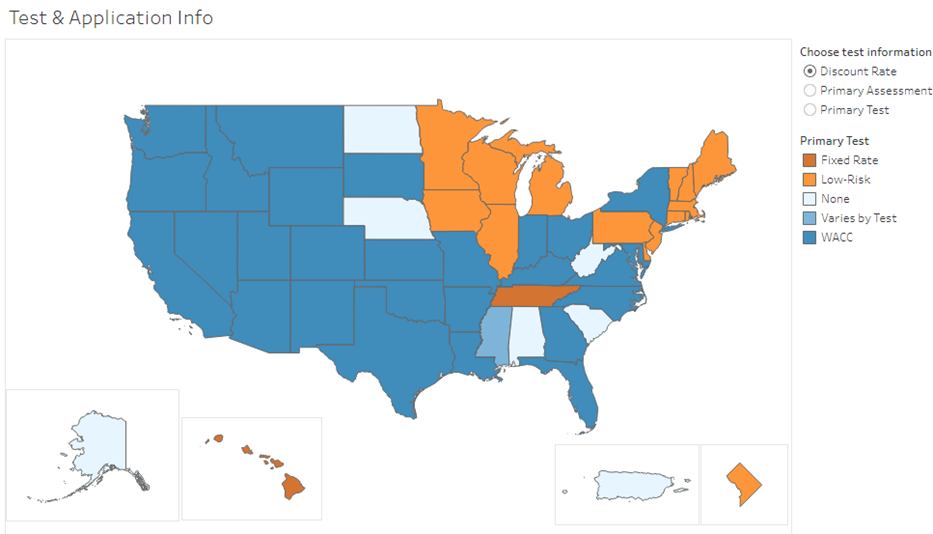DSP: NEI and GHG Impact Comparisons
(Continued from NESP Quarterly February 23, 2023)
In the case of host customer NEIs – which are typically difficult to quantify – the Database of Screening Practices shows us that many states use a proxy adder as a methodology to account for various types of NEIs. States like Colorado and Nevada utilize adders to account for the full range of host customer NEIs from their energy efficiency programs, while other jurisdictions utilize adders to account for specific impacts, such as Maryland’s health and safety adder.
The new DSP table summary shows the proxy adder values used by states, ranging from 5% to 25%. However, application of the adders varies: some states apply an adder to only low-moderate income (LMI) program impacts, while others apply broadly to all residential programs; in states that use a proxy adder across residential programs, the value applied to LMI programs may be higher than for non-LMI programs.

In the case of how jurisdictions account for carbon emission impacts in BCAs for efficiency programs, there is considerable variation in the methodologies and values used. Our research shows that jurisdictions often account for carbon emissions as an avoided utility system cost, either embedded into their avoided generation/distribution costs or as an avoided environmental compliance cost.
For states with carbon cap-and-trade systems, such as the Regional Greenhouse Gas Initiative in the Northeast, this value encompasses the cost of compliance with the cap-and-trade system. Other jurisdictions choose to account for carbon as a non-utility system impact (i.e., societal impact). When treated as a societal impact, we found that carbon emissions are often valued higher than when accounted for as a utility system impact. This may be due to the fact that many jurisdictions utilize the Social Cost of Carbon to value societal carbon emissions, which encompasses the full range of damages from carbon emissions that are often not captured as a utility system impact. Some jurisdictions account for avoided carbon emissions as both a utility system impact and a societal impact. This practice allows jurisdictions to account for the avoided impacts of carbon emissions to the utility system as well as other societal impacts, and can avoid double counting when performed correctly. See the MTR Handbook (Chapters 3.2 and 7.1) for guidance on accounting for GHG emission impacts.


